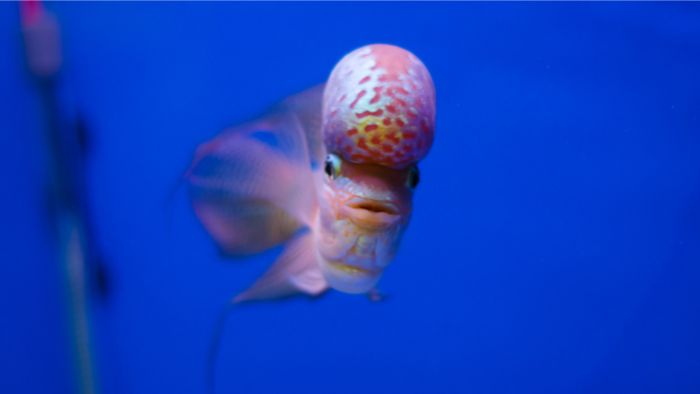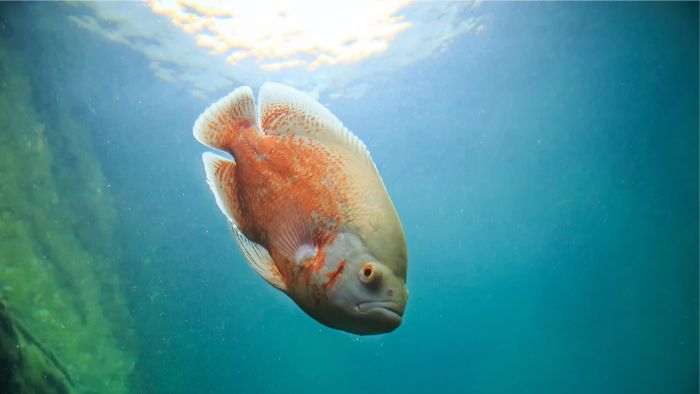Last Updated on July 1, 2022 by Guillermina
Learn all about the best food for cichlids growth.
Having an aquarium tank with different live pets is not only a pleasure but also a duty. One of the most important tasks is feeding your beloved pets, and when it comes to choosing the best food for cichlids growth, the selection can be daunting. Although many would initially say that this is a trivial activity, in practice it does not always turn out so easily.
Therefore, stay with us and learn everything you need to know about the best food for cichlids growth and provide your pets with what they need for a healthy and active life.
Dietary Requirements Of Cichlid Fish
Choosing the best food for cichlid growth depends and varies on the type of cichlid you own. With this in mind, the first step in finding the ideal is to understand their natural requirements.
Eating Habits In The Wild
When it comes to this type of fish, there are three types: Carnivores, Herbivores, and Omnivores, read more about each of them below.
Carnivores
Carnivores eat mostly animal food sources which actually means that they enjoy eating other fish, insects, crustaceans, etc. The most famous carnivores of this species are Jack Dempseys, Oscars, and Jaguar cichlids. We must note that these beauties have a short digestive tract intended to break down food sources rich in fats and proteins.
Herbivores
Herbivores eat mostly plant food sources which actually means they are meant to graze all day. They have a very long intestinal tract that allows them to absorb as many nutrients from food as possible.
In addition, we must note that, unlike carnivores whose food is rich in protein and fat, herbivorous food has lower fat and protein content. The most famous herbivores of this species are African cichlids, ie Tropheus and Mbuna.
Omnivores
Omnivores are easiest to describe as animals that eat both animal and plant sources of food. It is interesting to note that a large percentage of cichlids are at least partially omnivorous, although they may lean more in one way or another, depending on their preferences.
As for their digestive tract, it is in between that of a carnivore and herbivore, which actually means that it has the ability to break down a variety of foods. The most famous omnivores of this species are Angelfish, Firemouths, and Peacocks cichlids.
Click here to find out what science has to say about them.
Balanced Diet
There is no best food for cichlid growth without a balanced diet, and most important of all is to remember that in nature what fish eat is not always cut and dried. We can freely say that cichlids are quite opportunistic, they are not picky, and in most cases, if they come across something edible, they will swallow it.
However, we have to look at another very important thing, for fish that are quite strict carnivores or herbivores, there are some crosses. For instance, when a predator eats its prey, or in this case a fish, it also eats what is in the intestines of that fish (all the algae and other plant material). When simplified, it can be concluded that in the end, all fish end up eating a varied diet that balances all their nutritional needs.
What Ingredients Does Best Food For Cichlids Growth Include?
One of the essential things to look for when selecting the best food for cichlids growth is that the major ingredients are derived exclusively from aquatic sources of food or from insects.
The fact is that fish have evolved over millions of years to eat certain types of food, which actually means that their digestive system is not ready or in other words capable of breaking down most terrestrial foods, such as beef heart or gluten. This type of food passes through their body exclusively as waste, and regular consumption can have unforeseeable consequences because unfortunately some of these proteins can be an extra strain on a fish’s kidneys.
Carnivorous cichlids eat insects as a major part of their diets, so these pets choose ingredients like black soldier fly larvae meal. These types of food provide complete, rich proteins. In addition, there are no exoskeletons and is therefore easily digestible without a lot of waste. Furthermore, cricket flour, as well as dried ground crickets, are also one of the best foods for cichlids growth because they are high in protein and calcium.
As for herbivores, the best food for cichlids growth includes ingredients like spirulina algae, because this type of food is loaded with vitamins, minerals, and easy-to-digest protein. Carnivore species naturally need a higher percentage of protein and fat, so the best food for cichlids growth should contain fish meal or shrimp meal as the main ingredient.
Let’s Repeat What We Learned About The Best Food For Cichlids Growth
Almost every cichlid owner will agree that these types of fish are smart, energetic, and above all entertaining. Cichlids are simply unique and rewarding aquatic creatures. Most of them are omnivores, eating mostly pellets and flakes composed of meaty proteins and plant matter, but you don’t need to stop there, feel free to treat them with frozen treats like caring shrimp and bloodworms too.
What do you think is the best food for cichlids growth? Write your answers in the section below.
Read more: The Secret To Raising Freshwater Prawns In Tanks
FAQs
What Is The Best Fish For Aquaponics?
It is very difficult to decide on only one type of fish and declare it the best for aquaponics because it all depends on your system, location, temperature, and type of crop. However, according to satisfied owners, feel free to opt for salmon, tilapia, trout, goldfish, bass, tetras, catfish, cod, perch, and sunfish.
Can You Put Fertilizer In Aquaponics?
You can put fertilizer in your aquaponics, but you must be careful to use fertilizers that are organic and have a minimal effect on the fish.
What Is The Fastest Growing Fish For Aquaponics?
It is believed that the Nile tilapia is the fastest-growing fish in aquaponics.
What Is The Fish To Plant Ratio In Aquaponics?
There is a common rule that the fish tank volume should be equal to the grow bed volume, accordingly the ratio of fish to plant should be 1: 1.



